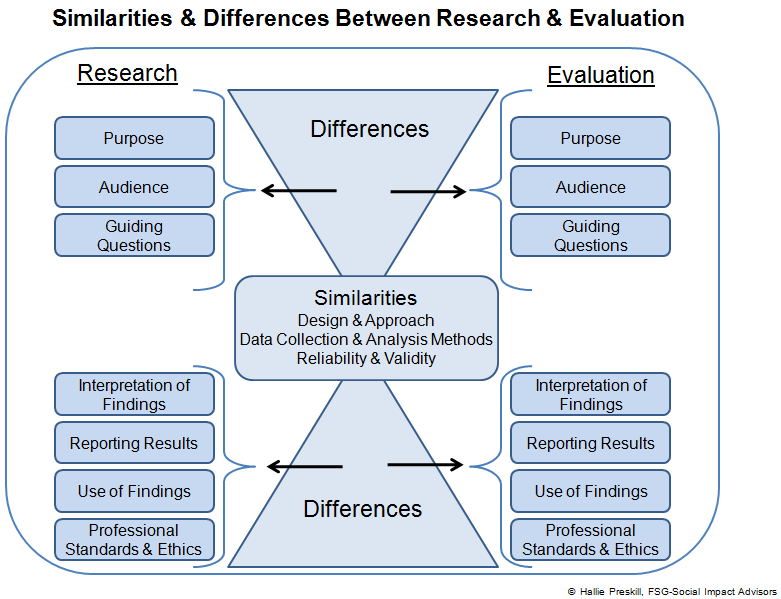Hi! I’m Joe E. Heimlich; some days I’m not sure what I do. I’m a professor at Ohio State University, an Extension Specialist based at COSI, a large science center, and Director for the Institute for Learning Innovation in Edgewater, MD.
Why I’m not sure what I do relates specifically to the topic of this blog: Visitor Studies and Evaluation—Looking for the Intersection. My work has historically been studying visitors in zoos, parks, nature centers, botanical gardens, etc. In the last decade, I’ve done a lot more with museums, science centers, historical centers, and performing arts. I study visitors. And I do evaluation. And sometimes they overlap and sometimes they’re not at all the same.
Lessons Learned: Hallie Preskill’s wonderful visual of the hourglass as a representation for how research and evaluation intersect and diverge is a useful tool for framing evaluation and visitor studies. Although sometimes the methods are identical, and sometimes the philosophy and use are the same, there are inherent differences shaped by context. This blog is the first in a series being written by AEA members who are also members of the Visitor Studies Association. Through this short series, we hope to introduce fellow evaluators to some of the interesting differences in our work. (Hourglass reprinted with permission below and available full size in AEA Public eLibrary.)
Using Hallie’s hourglass… First, in terms of the philosophy: visitor studies advocates for the visitor. In most of our settings, visitors come by choice. And in most of these settings, their choices are not driven by “learning.” The settings in which visitors studies work nearly uniformly have education as a part of their mission, however. Visitor studies focuses in part on who comes, why they come, what they desire, what they are open to, and how we can integrate messages into the visitors’ desired outcomes. Much of our work is around shaping messages to meet visitors where they are. And we do program evaluation for the institutions.
Second, in terms of methods: our evaluation methods are severely constrained by the nature of the visit. We often have a maximum of 3-5 minutes of a visitor’s time to get from them the data we need. Visitors are dealing with time budgets, family issues, social pressures and more. We often must track visitors to fully understand their visit and what they got from it. More on this in a later post and in a couple of very cool sessions for AEA!
Finally, in terms of use: here is where we most look like the rest of the field of evaluation. Visitor studies is utilization focused, and our points of pride are when programs, exhibits, and yes, even visitors change because of the work we do. Welcome to the visitor studies aea365 Tip-a-Day posts.
This contribution is from the aea365 Tip-a-Day Alerts, by and for evaluators, from the American Evaluation Association. We are pleased to welcome colleagues from the Visitor Studies Association – many of whom are also members of AEA – as guest contributors this week. Look for contributions preceded by “VSA Week” here and on AEA’s weekly headlines and resources list.


Joe, I really enjoyed your use of Hallie Preskill’s hourglass to illustrate your work in the field of visitor studies and evaluation. It was particular refreshing seeing Preskill’s work applied to a unique contextual setting!